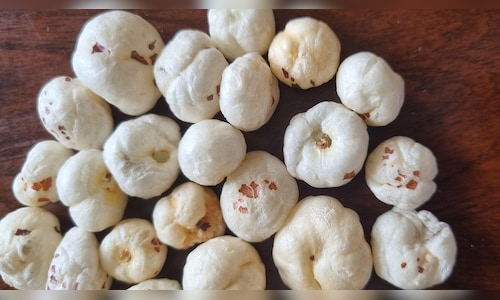Our Terms & Conditions | Our Privacy Policy
Makhana emerges as India’s top superfood as 3 in 5 snackers pick health-first options: Report
Once a traditional fasting staple, makhana has now made its way into mainstream snack aisles and urban pantries — and it’s leading a health-first revolution. According to the Farmley Healthy Snacking Report 2025, nearly three in five Indian consumers now consider makhana their go-to superfood, reflecting a significant shift in the way India snacks today.
Unveiled at the Indian Healthy Snacking Summit (IHSS) 2025, the report draws on consumer responses across age groups, cities, and lifestyles — capturing a market rapidly moving from mindless munching to mindful indulgence.
“This year’s report reflects a clear evolution — from snacking out of habit to snacking with purpose,” said Akash Sharma, Co-Founder of Farmley. “Today’s consumers demand both flavour and functionality, and they’re unwilling to compromise on either.”
Over 55% of respondents now seek preservative-free snacks, showing a strong consumer preference for “clean label” products. In fact, 52% said resealable, eco-conscious packaging is a key factor in their purchasing decisions — a sign that sustainability and freshness are now essentials in the snacking experience.
Formats are evolving too. Nearly 45% of consumers prefer on-the-go snack options such as dry fruit-based desserts and energy bars — compact, functional products ideal for India’s growing population of desk-bound professionals and urban commuters.
While chips and namkeen remain in the picture — with 14% and 10% of respondents still loyal to these classics — roasted and flavoured dry fruits (36%) and makhana (19%) are leading the savoury snack revolution. These figures, Farmley notes, reflect an “upgrade” in consumer preferences — from familiar formats to functional ones.
The timing coincides with policy momentum as well. The Union Budget 2025–26 recently announced the formation of a Makhana Board in Bihar, further legitimising the superfood’s rise and highlighting its economic potential for farmers and regional producers.
The report also shows that nutty flavours like peanut butter, pistachio, and hazelnut are emerging as popular choices for sweet snacks. While chocolate still dominates, this shift suggests a new kind of indulgence — one that satisfies cravings while supporting wellness goals.
As brand loyalty diversifies, D2C disruptors such as Farmley, The Whole Truth, and Yoga Bars are claiming significant market share, particularly among millennials and Gen Z consumers, who buy packaged snacks online at nearly twice the rate of older age groups (43% versus 28%). These younger consumers are also highly influenced by content creators, reshaping how snack trends are discovered and spread.
Meanwhile, Tier 2 and Tier 3 cities are witnessing a quiet rise of regional brands. Although these players may lack national advertising budgets, they are building strong consumer trust through consistent quality and cultural relevance — a trend that could redefine competition in India’s snack market.
In a sector estimated at ₹45,000 crore, India’s snack culture is fast becoming a reflection of consumer priorities — health, sustainability, and convenience. With modern shoppers demanding functionality in every bite, brands must continue to evolve to stay relevant.
Images are for reference only.Images and contents gathered automatic from google or 3rd party sources.All rights on the images and contents are with their legal original owners.



Comments are closed.